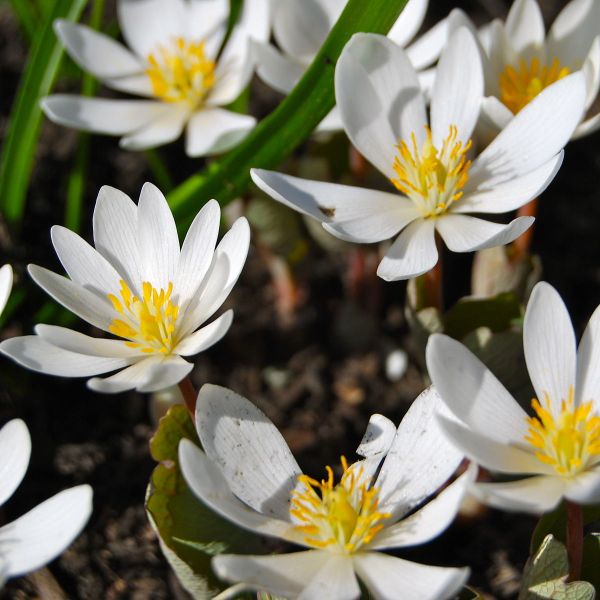Bloodroot is a flowering plant native to the eastern part of the United States and Canada. When cut, the root and budding rootstalk secrete a red fluid that gives the plant its name. During the fall months, the root and rhizome are routinely harvested by herbalists for use in medicines.
Bloodroot has long been used by Native Americans to induce vomiting, the practice of which is believed to cleanse the body of harmful toxins. Practitioners of alternative medicine contend that it can also treat a wide array of medical conditions, from acne all the way up to cancer.
Bloodroot has a long history of use in quack medicine, starting in the 1920s with a health tonic known as “Pinkard’s Sanguinaria Compound”. The cure-all tonic was seized by federal authorities in 1931 due to false health claims and potentially deadly toxicities.Similar actions have been taken in recent years to halt the unscrupulous marketing of bloodroot as a cancer cure.
Bloodroot is often used in alternative medicine as a topical or oral antibacterial agent. When used internally, bloodroot is believed to relax smooth muscles, particularly in the heart and lungs. Doing so may improve cardiovascular and respiratory health.
At present, there is little clinical evidence that bloodroot can treat any medical condition when taken internally. While it may offer benefits when used topically (on the skin), much of the current research remains conflicted and inconclusive.
There is some evidence that bloodroot can reduce dental plaque and prevent or treat gingivitis and other gum diseases. A 2012 study in Phytotherapy Research concluded that toothpaste and mouthwashes infused with S. canadensis exert antibacterial properties beneficial to oral health.
Bloodroot is often used in topical skincare products due to its high antioxidant content. It is believed to treat skin conditions like acne, eczema, and psoriasis and to debride (reduce) skin growths such as warts, moles, and benign tumors.
Despite these purported benefits, a 2009 study in the Journal of the American Academy of Dermatology concluded that the excessive use of topical bloodroot can lead to tissue injury and death.
Bloodroot is often used to treat flu, common colds, sinus infections, and lung infections. It is believed to act as an expectorant, eliminating phlegm and mucus in the airways.
Research also suggests that S. canadensis may have inotropic effects, meaning that it strengthens the contraction of the heart muscle.Doing so may improve the delivery of oxygen to and extraction of carbon dioxide from tissues, making the lungs and respiratory tract more effective.
Bloodroot paste is popular among those suffering from arthritis, as it can rapidly eliminate the pain and inflammation in joints, while also increasing circulation throughout the body, stimulating growth and repair, and also keeping the metabolism healthy. More energy means more activity, and less pain of inflammation makes that extra burst of life even more enjoyable.
Bloodroot does have a lot of impressive benefits, but there are some side effects as well. This is a very powerful plant and can be dangerous if used incorrectly to improve your health. It is toxic in nature and can even cause scarring if used excessively. Internal use should be strictly regulated to tinctures and decoctions in small, measured amounts, and the strict advisement of an herbal practitioner or doctors is strongly recommended.
Post time: Jul-17-2020
